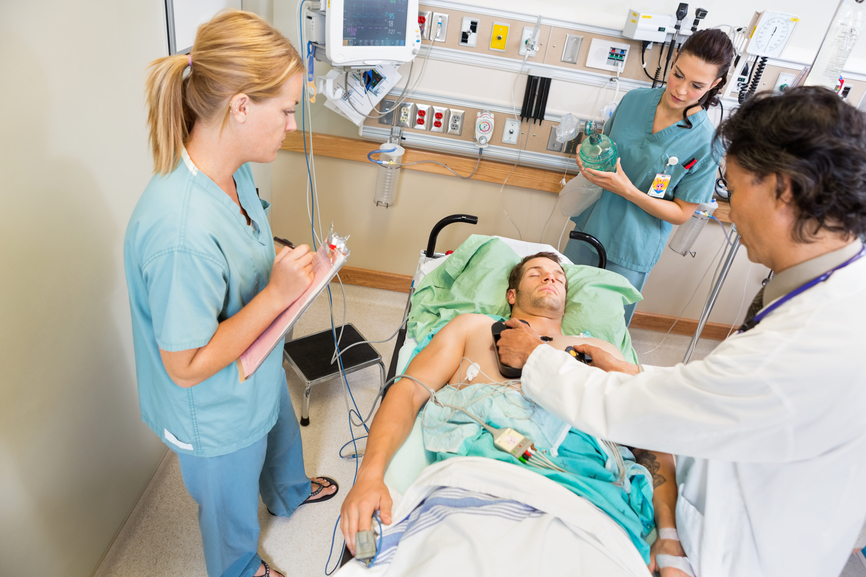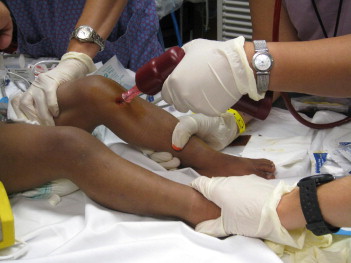
Effective airway management is a cornerstone of emergency medical care, representing the critical first step in resuscitating an unconscious patient. The patency of the airway directly dictates oxygen delivery to the brain and other vital organs, making its obstruction a life-threatening emergency. Two fundamental manual techniques, the Head Tilt-Chin Lift and the Jaw-Thrust maneuvers, are employed by healthcare professionals and trained first responders to open an obstructed airway, each tailored to specific clinical scenarios, particularly concerning potential spinal injury.
The Criticality of Airway Management
When a person becomes unconscious, the muscles supporting the tongue and pharynx can relax, allowing the tongue to fall backward and obstruct the posterior pharynx, thereby blocking the airway. Additionally, foreign bodies, vomit, or blood can compromise airway patency. Without prompt intervention, this obstruction leads to hypoxia, brain damage, and ultimately cardiac arrest. The primary goal of both the Head Tilt-Chin Lift and Jaw-Thrust maneuvers is to mechanically displace the tongue and associated soft tissues forward, clearing the path for air to enter the lungs.
Prior to performing any airway maneuver, scene safety must be established, and appropriate personal protective equipment (PPE) should be utilized. The rescuer should assess the patient’s responsiveness and breathing status. If the patient is unresponsive and not breathing normally (or only gasping), immediate airway intervention is required.
The Head Tilt-Chin Lift Maneuver
The Head Tilt-Chin Lift maneuver is the preferred method for opening the airway in an unresponsive patient when there is no suspicion of cervical spinal injury. It is generally easier to perform and more consistently effective than the jaw-thrust maneuver when spinal injury is not a concern.
Purpose: To displace the tongue and epiglottis away from the posterior pharynx, thereby opening the airway, without necessitating complex anatomical adjustments.
Indications:
- Unresponsive patient with absent or obstructed breathing.
- Any situation where airway patency is compromised due to tongue fall, and there is no evidence or suspicion of cervical spine trauma.
Contraindications:
- Suspected cervical spinal injury (trauma to the head, neck, or multi-system trauma patient where the mechanism of injury suggests potential spinal damage). In such cases, the Jaw-Thrust maneuver is indicated.
Step-by-Step Guide for Performing the Head Tilt-Chin Lift Maneuver:
- Patient Positioning: Ensure the patient is lying supine (on their back) on a firm, flat surface. The rescuer should kneel beside the patient’s head, positioning themselves to have a clear view and access to the patient’s face and airway.
- Hand Placement (Forehead Hand): Place the palm of one hand on the patient’s forehead. Apply gentle but firm pressure to tilt the head backward. This action straightens the airway by aligning the oral, pharyngeal, and laryngeal axes.
- Hand Placement (Chin Hand): Place the fingertips of your other hand under the bony part of the patient’s chin, near the mental protuberance (the point of the chin). Avoid placing pressure on the soft tissues of the throat, as this could further obstruct the airway.
- Chin Lift: Gently lift the chin straight upward and forward. This action pulls the tongue and epiglottis away from the posterior pharynx, effectively opening the airway.
- Optimal Position: Continue to lift the chin while maintaining the head tilt. The mouth should be slightly open to facilitate airflow. The goal is to achieve a neutral or slightly hyperextended neck position, depending on the patient’s anatomy and the degree needed to clear the airway.
- Assess for Breathing: Once the maneuver is performed, immediately assess for normal breathing (Look, Listen, and Feel for no more than 10 seconds).
- Look: Observe for chest rise and fall.
- Listen: Auscultate for breath sounds at the patient’s nose and mouth.
- Feel: Sense for airflow on your cheek.
- Maintain Position: Crucially, the rescuer must maintain this position without interruption to keep the airway open. If the patient begins to breathe spontaneously and effectively, continue to monitor them. If breathing remains absent or inadequate, proceed with rescue breaths or bag-mask ventilation while maintaining the maneuver.
Key Considerations for Head Tilt-Chin Lift:
- Be gentle but firm. Excessive force can cause injury.
- Ensure fingers are on the bony part of the chin, not the soft tissues under the jaw, which can compress the airway.
- This maneuver should automatically open the mouth slightly due to the mechanical action. If the mouth does not open enough, gently assist it open with the thumb of the chin hand, without re-obstructing the airway.
The Jaw-Thrust Maneuver
The Jaw-Thrust maneuver is a specialized technique used to open the airway in an unresponsive patient when there is a suspicion of cervical spinal injury. The fundamental principle is to open the airway by moving the jaw forward without extending the neck, thereby minimizing movement of the cervical spine. This maneuver is more difficult to perform and maintain, especially for a single rescuer.
Purpose: To anteriorly displace the mandible, thereby moving the tongue and epiglottis forward and away from the posterior pharynx, while simultaneously maintaining inline stabilization of the cervical spine.
Indications:
- Unresponsive patient with absent or obstructed breathing.
- Any situation where airway patency is compromised due to tongue fall, and there is a suspicion or confirmed cervical spinal injury. This includes patients involved in significant trauma (e.g., motor vehicle accidents, falls from height, diving accidents, blunt force head/neck trauma).
Contraindications:
- None, if indicated due to suspected spinal injury. However, if spinal injury is not suspected, the Head Tilt-Chin Lift is generally preferred due to its simplicity and effectiveness.
Step-by-Step Guide for Performing the Jaw-Thrust Maneuver:
- Rescuer Positioning: The rescuer should kneel at the patient’s head, directly above them, looking down at the patient’s face. This position allows for optimal leverage and control.
- Hand Placement (Jaw Angles): Place the fingers of both hands under the angles of the patient’s lower jaw (mandible). Ensure your fingertips are firmly gripping the bony angles.
- Hand Placement (Thumbs): Place your thumbs on the patient’s cheekbones, or on the bony prominences just above the corners of the mouth, or even on the maxilla (upper jaw). The thumbs provide counter-pressure and help to stabilize the head, preventing unwanted neck movement.
- Thrusting the Jaw: Using your fingers, forcefully and steadily lift or thrust the jaw upward and forward. The goal is to bring the lower teeth in front of the upper teeth (protrude the jaw). This action pulls the tongue and epiglottis forward, clearing the airway.
- Opening the Mouth (if necessary): While maintaining the upward and forward thrust, use your thumbs to gently push the chin down, or to separate the upper and lower teeth slightly, to open the patient’s mouth enough for air to enter. Be careful not to allow the tongue to fall back.
- Maintain Inline Stabilization: Throughout this entire process, it is paramount to avoid extending or flexing the patient’s neck. The head should remain in a neutral, in-line position relative to the spine. If another rescuer is present, they should manually maintain cervical spine stabilization by holding the patient’s head on either side.
- Assess for Breathing: Once the maneuver is performed, immediately assess for normal breathing (Look, Listen, and Feel for no more than 10 seconds).
- Look: Observe for chest rise and fall.
- Listen: Auscultate for breath sounds at the patient’s nose and mouth.
- Feel: Sense for airflow on your cheek.
- Maintain Position: The rescuer must maintain this jaw-thrust position without interruption to keep the airway open. This can be physically demanding. If breathing remains absent or inadequate, proceed with rescue breaths or bag-mask ventilation while maintaining the maneuver. Ventilations can be more challenging to deliver effectively with this maneuver, often requiring a good seal with a bag-mask device.
Key Considerations for Jaw-Thrust:
- This maneuver requires significant practice and strength. It is often more effectively performed by two rescuers, with one maintaining manual inline spinal immobilization and the other performing the jaw thrust.
- The primary goal is to move the jaw forward, not to tilt the head back. Spinal integrity takes precedence.
- Ensure a firm grip on the bony angles of the jaw to effectively lift it.
- Be prepared for challenges in achieving a seal with a bag-mask device while simultaneously maintaining the jaw thrust. Specialized techniques or additional rescuers may be needed.
Choosing Between Maneuvers
The decision between the Head Tilt-Chin Lift and the Jaw-Thrust maneuver is critical and hinges entirely on the likelihood of cervical spinal injury.
- No suspected spinal injury: Always use the Head Tilt-Chin Lift. It is simpler, quicker, and generally more effective for clearing the airway.
- Suspected spinal injury: Always use the Jaw-Thrust maneuver. While more difficult, it minimizes cervical spine movement and reduces the risk of exacerbating a spinal cord injury. If the Jaw-Thrust maneuver is unsuccessful in opening the airway and the patient is not breathing, and if an alternate advanced airway adjunct is not immediately available, the Head Tilt-Chin Lift may be cautiously performed as a last resort to save a life, acknowledging the risk to the spine. However, this is a rare and extreme circumstance, and every effort should be made to avoid cervical spine movement.
Post-Maneuver Assessment and Further Action
Once the airway is opened, whether by Head Tilt-Chin Lift or Jaw-Thrust, the rescuer must continuously reassess for spontaneous breathing.
- If the patient begins to breathe adequately, continue to monitor the patient and maintain the airway maneuver until advanced care arrives or the patient recovers consciousness and can maintain their own airway.
- If the patient remains apneic (not breathing) or has inadequate breathing, rescue ventilations (mouth-to-mouth or with a bag-mask device) must be initiated immediately while maintaining the chosen airway maneuver.
Importance of Training and Practice
Proficiency in both the Head Tilt-Chin Lift and Jaw-Thrust maneuvers is essential for anyone involved in emergency care. These skills are perishable and require regular practice and hands-on training as part of Basic Life Support (BLS) and Advanced Cardiovascular Life Support (ACLS) certifications. Proper technique ensures both effectiveness in opening the airway and minimizing potential harm to the patient.
Conclusion
The Head Tilt-Chin Lift and Jaw-Thrust maneuvers are foundational techniques in emergency airway management. Understanding their distinct indications, proper execution, and the rationale behind choosing one over the other is paramount for healthcare providers and first responders. By effectively opening a compromised airway, these simple yet critical interventions can prevent hypoxia, mitigate neurological damage, and ultimately save lives. Mastery of these skills through professional training and diligent practice remains a cornerstone of competent emergency medical care.
References
- American Heart Association. (2020). Guidelines for Cardiopulmonary Resuscitation and Emergency Cardiovascular Care. Circulation, 142(16_suppl_2), S336-S346.
- Bledsoe, B. E., Porter, R. S., Cherry, R. A. (2022). Paramedic Care: Principles & Practice, Volume 1: Introduction to Paramedicine. Pearson.
- Marx, J. A., Hockberger, R. S., Walls, R. M. (Eds.). (2020). Rosen’s Emergency Medicine: Concepts and Clinical Practice. Elsevier.
- National Association of Emergency Medical Technicians (NAEMT). (2021). Prehospital Trauma Life Support (PHTLS). Elsevier.
- Travers, A. H., Perkins, G. D., Berg, R. A. (2015). Part 3: Adult Basic Life Support and Cardiopulmonary Resuscitation Quality: 2015 American Heart Association Guidelines Update for Cardiopulmonary Resuscitation and Emergency Cardiovascular Care. Circulation, 132(18_suppl_2), S51-S60.







